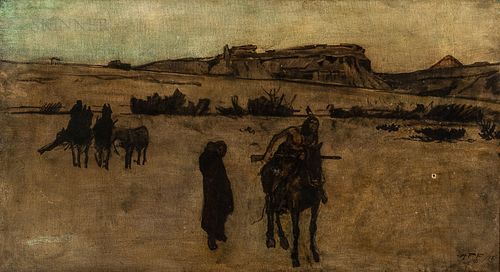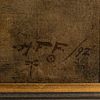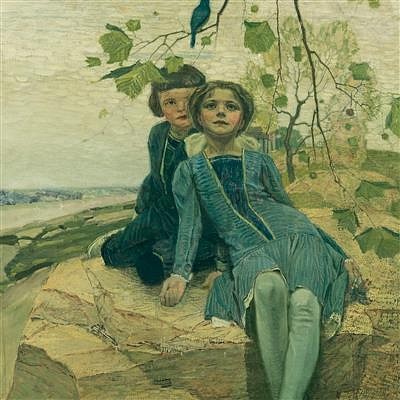Henry François Farny (American, 1847-1916), Danger/A Study
Lot 26
About Seller
Bonhams Skinner
274 Cedar Hill Street
Marlborough, MA 01752
United States
Founded over four decades ago, Bonhams Skinner offers more than 60 auctions annually. Bonhams Skinner auctions reach an international audience and showcase the unique, rare, and beautiful in dozens of categories, including the fine and decorative arts, jewelry, modern design, musical instruments, sc...Read more
Estimate:
$80,000 - $120,000
Absentee vs Live bid
Two ways to bid:
- Leave a max absentee bid and the platform will bid on your behalf up to your maximum bid during the live auction.
- Bid live during the auction and your bids will be submitted real-time to the auctioneer.
Bid Increments
| Price | Bid Increment |
|---|---|
| $0 | $10 |
| $100 | $25 |
| $500 | $50 |
| $1,000 | $100 |
| $3,000 | $250 |
| $5,000 | $500 |
| $10,000 | $1,000 |
| $30,000 | $2,500 |
| $50,000 | $5,000 |
| $100,000 | $10,000 |
| $300,000 | $25,000 |
| $500,000 | $50,000 |
| $1,000,000 | $100,000 |
About Auction
By Bonhams Skinner
Jan 28, 2022
Set Reminder
2022-01-28 10:00:00
2022-01-28 10:00:00
America/New_York
Bidsquare
Bidsquare : American Works of Art
https://www.bidsquare.com/auctions/skinner/american-works-of-art-8710
Join us in Marlborough on Friday, January 28th at 10AM for a live auction of American Works of Art, including painting, sculpture, and works on paper. Bonhams Skinner bidsquare@bonhamsskinner.com
Join us in Marlborough on Friday, January 28th at 10AM for a live auction of American Works of Art, including painting, sculpture, and works on paper. Bonhams Skinner bidsquare@bonhamsskinner.com
- Lot Description
Henry François Farny (American, 1847-1916)
Danger/A Study
Initialed and dated "H.F.F./92" and with dragonfly and circle symbols l.r.
Oil on canvas, 22 x 40 in. (56.0 x 101.6 cm), framed.
Condition: Puncture (1/4 in. diameter) c.r., wax-lined, retouch, surface accretions, minor surface grime, and possible subtle solvent damage.
Provenance: A Massachusetts estate.
N.B. Henry Farny is credited with these words, "The plains, the buttes, the whole country and its people are fuller of material for the artist than any country in Europe." (1) This sentiment provides a glimpse into the motivation and mindset of the artist who was recognized during his lifetime, and today, as one of the most admired painters of the American Indian.
Born in Alsace Lorraine, Henry Farny came to the United States in 1853 as a young child brought by his parents who departed France for political reasons. The family settled in Warren, Pennsylvania, in the western part of the state near a Seneca reservation. Here Farny was introduced to Indian culture through these peaceful neighbors living in harmony with the land. The Farny family then moved to Cincinnati, where Henry developed his artistic talent through lithography and illustration, working for local publishers. By 1865 he had his first illustration published in Harpers Weekly. From 1867 to 1870 Farny lived abroad, studying art in Rome and Düsseldorf.
Farny remained deeply fascinated by Indian culture. To gain first-hand knowledge, in 1881 he traveled over a thousand miles by canoe on the Missouri River. During the 1880s he took advantage of other opportunities for travel to the West to meet Native peoples, to sketch and photograph Indian life, and to collect cultural artifacts, saving these materials in his Cincinnati studio as source material for his illustrations and paintings. In 1889 he was awarded a medal at the Paris Exposition for one of his Indian subjects.
After 1890, Farny was able to give up magazine illustration to concentrate his efforts on painting, commencing a fruitful, productive period through 1906. He was particularly interested in the Sioux people, who eventually adopted him into their tribe, bestowing on him the name "Long Boots" and the symbol of a circle enclosing a dot, a device which he often included as part of his signature.
Farny did not choose to paint Indians in conflict with the White Man or to stress the hardships of their existence. Instead he used his talent and documentary skill to portray, without sentimentality, a culture living in harmony with the natural world, providing a window on a vanishing way of life. His paintings have been noted for their mood of expectation, as we find in the work at hand, Study for "Danger." Here, a mounted brave leans forward to assess something or someone in the distance while his fellow travelers, who are moving camp, pause behind him. This oil on canvas dated 1892 is an early study for a finished work of the same size but completed ten years later. There are two other known studies for Danger, one a full-sized charcoal drawing dated 1901 and then a smaller oil, measuring 13 ½ x 25 inches, dated 1902.
1. Robert Taft, Artists and Illustrators of the Old West, 1850-1900, p. 219
Condition
Condition: According to family legend, the hole in the canvas was made by a son who shot off a beebee gun in the house.
Framed dimensions are 25 7/8 x 43 7/8 x 1 1/2 inches.
Any condition statement is given as a courtesy to a client, is only an opinion and should not be treated as a statement of fact. Skinner Inc. shall have no responsibility for any error or omission. The absence of a condition statement does not imply that the lot is in perfect condition or completely free from wear and tear, imperfections or the effects of aging. - Shipping Info
-
Please visit http://www.skinnerinc.com/services/payment-and-shipping/ for information regarding the collection of items purchased at auction.
-
- Buyer's Premium



 EUR
EUR CAD
CAD AUD
AUD GBP
GBP MXN
MXN HKD
HKD CNY
CNY MYR
MYR SEK
SEK SGD
SGD CHF
CHF THB
THB














